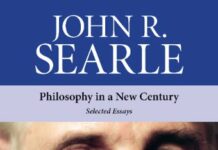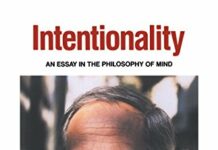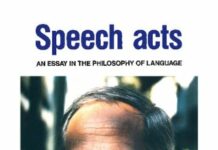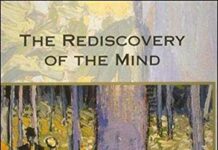
Ebook Info
- Published: 2064
- Number of pages: 224 pages
- Format: PDF
- File Size: 7.64 MB
- Authors: John R. Searle
Description
It has long been one of the most fundamental problems of philosophy, and it is now, John Searle writes, “the most important problem in the biological sciences”: What is consciousness? Is my inner awareness of myself something separate from my body?In what began as a series of essays in The New York Review of Books, John Searle evaluates the positions on consciousness of such well-known scientists and philosophers as Francis Crick, Gerald Edelman, Roger Penrose, Daniel Dennett, David Chalmers, and Israel Rosenfield. He challenges claims that the mind works like a computer, and that brain functions can be reproduced by computer programs. With a sharp eye for confusion and contradiction, he points out which avenues of current research are most likely to come up with a biological examination of how conscious states are caused by the brain.Only when we understand how the brain works will we solve the mystery of consciousness, and only then will we begin to understand issues ranging from artificial intelligence to our very nature as human beings.
User’s Reviews
Editorial Reviews: Review For sheer intellectual brio, it would be hard to beat John R. Searle’s The Mystery of Consciousness. Mr. Searle, a philosopher at Berkeley, casts a critical eye on recent attempts to solve the mind-body problem–how it is that the lump of gray meat in your skull produces consciousness–by eminent thinkers like Daniel Dennett, Roger Penrose and Francis Crick. Often he gives a clearer account of their ideas than can be found in their own books. With vigorous logic, he teases out the contradictions of dualism, materialism and computer-inspired “artificial intelligence,” which denies the very existence of consciousness. For evidence to the contrary, he urges the reader to pinch himself–which is the only thing that might detract from the pleasure of this book. — The Wall Street Journal, Jim Holt About the Author John R. Searle is the Slusser Professor of Philosophy at the University of California, Berkeley. His most recent book is Making the Social World. (October 2014)
Reviews from Amazon users which were colected at the time this book was published on the website:
⭐A good exposition, via a compilation of past book reviews by John Searle, published over the years in the New York Review of Books, of his views on consciousness and mind, he reiterates here, and in some ways strengthens, his famous Chinese Room argument in examining and denying the claims of the authors of the books under review in this volume.I think that argument, by the way, while superficially right and useful (as a corrective to those with an overly mechanistic view of mind), ultimately misses the point because Searle presents it as a denial of what he calls “Strong Artificial Intelligence,” the position that holds one can build minds, with the sort of consciousness we have, on computers using programs to accomplish this. Relying on the Chinese Room argument, Searle denies “Strong AI” by noting that programs are purely formal, or syntactical as he puts it, and that syntax cannot give meaning which requires a knowing, thinking, aware subject.The problem with his argument is that the Chinese Room thought experiment — while demonstrating that we do expect to see a knower at work in acts of “intelligence” (and that computers as presented in his thought experiment do not and cannot know anything) — still does not demonstrate that computers that have been configured and programmed in certain ways cannot produce, at a “higher” level, just what he wants to deny them, consciousness. That is, syntax may indeed yield semantics in the same way that Searle tells us, elsewhere, that atomic structure can yield hardness or liquidness. But Searle seems never to notice this fundamental flaw in his case.Searle remains fixated on his idea that consciousness is somehow not explainable via syntactical operations, as seen in computers, and this position keeps cropping up in criticisms of the various writers under review in this book. He’s particularly hard on Daniel Dennett (
⭐), whom he takes to task for suggesting we are all zombie-like and so, says Searle, seems to be denying the qualitative nature of consciousness which the Chinese Room argument demonstrates. Of course, one can read Dennett’s claim as being somewhat polemical since it is hard to take Dennett as saying there is no consciousness in the sense that neither he nor the rest of us have it. Dennett’s point seems, rather, to be that consciousness is explainable in terms of non-conscious building blocks and that the sense of being a conscious “entity” that we get is only that, a sense of this. (However, and this is important, having senses of things, being aware, is not similarly precluded by the absence of entity status. It’s just that the entity will be seen as a physical system, not a mental one, since, even though the physical system has awareness of other physical phenomena, which awareness is part of a mental life, there need not be a separate mental entity present, too.)Dennett, in fact, wants to tell us there is no mental entity per se, only various brain functionalities which combine in certain ways to build the subjectness that we experience as consciousness (including consciousness of self). But Searle, taking Dennett literally, accuses him of actually arguing that we are all zombies, i.e., unconcious except that we happen to think we’re conscious! Such a reading is, of course, a contradiction in terms as Searle suggests. But this does not seem to be a fair interpretation of Dennett’s claims.Searle’s Chinese Room argument is right insofar as it shows that the idea of “intelligence” (what we mean by intelligence in creatures like ourselves) requires a subjective knower. But it is wrong insofar as Searle wants to say that it thereby demonstrates why a claim like the one Dennett makes, that consciousness can be built up on a non-organic machine platform (e.g., computers and their programs), is, itself, wrong. In fact, Dennett’s claim looks better and better against the weaknesses of the Chinese Room argument when this argument is applied as an attack against “Strong AI” as Searle uses it. (That is Searle’s Chinese Room Argument suffers from certain technical flaws including a suppressed premise as well as equivocation in some of its middle terms and a failure to elucidate certain key concepts on which the argument depends.)Searle also takes on David Chalmers (
⭐) and attacks him for suggesting that consciousness is something that is, in principle, logically divorced from the physicality of the world. As it happens, Chalmers has offered a very useful analysis of the uses we make of mental terms in many cases, showing how we often have two things in mind: a reference to the operational aspects and a reference to the phenomenality that often accompanies the operational aspects, i.e., our experience of having experiences, our subjectness. That we often mean both or one or the other in different contexts seems, in fact, to be quite true. And Chalmers also seems to be right in noting that we often have trouble distinguishing what exactly we are referring to in many actual cases and that the referral function tends to slip and slide over this somewhat icy sheet. Searle rightly suggests that while this may be true of our usages, it doesn’t mean that mind and body are two parallel realms as Chalmers seems to be proposing. For Searle this is a matter of how we talk about the phenomena of our experience, i.e., that minds are the functions of brains just as digestion is the function of stomachs, pumping blood the function of hearts, etc. But Searle thinks Chalmers falls into property dualism while he is simultaneously suggesting that consciousness is irreducible. Searle’s position is that it is, indeed, irreducible in terms of levels of speech, but scientifically, he wants to say that we can certainly reduce it to a biological function of brains which, as yet, is beyond our understanding but not, perhaps, forever. Searle further suggests that Chalmers holds a position which could, in principle, suppose that consciousness exists throughout the universe at every level, inanimate as well as animate (i.e., a variant of so-called panpsychism). Though Chalmers’ rebuttal to this reading is included in the book, Searle does not accept the rebuttal as written and insists the conclusion remains implied in Chalmers’ arguments.Searle addresses other writers here as well, including Edelman’s work on massively redundant brain processing (
⭐) which he finds quite promising, etc. Because of the limitation of this amazon review format, unfortunately, I can’t go much further. But suffice it to say, this is a good book and a useful introduction to the ideas of these thinkers. Searle is a good expositor and has some useful points to make, though I think, in the end, he has got some things quite wrong, particularly his claim that his Chinese Room argument puts paid to the notion of “Strong AI” which, he tells us, holds that minds can be built out of computers and their programs as well as out of brains (the “causal” source of our own mental lives). His failure to see the weakness in his core claim, however, in the end undermines the strength of his criticisms of the other writers presented here.SWM
⭐Another excellent polemic by Searle. His contention that “consciousnes” is observable along a two-fold structure is substantively true: (1) from the scientific materialist point of view of the independently verifiable third-person perspective, and (2) from the immaterialist point of view of the unverifiable first-person perspective of things like “pain.” But unlike most other contemporary theories of consciousness, Searle’s it’s not either/or, but and/both, and almost no one else is taking note of this. Those philosophers that are, are coming up with preposterous theories along the way. Searle wants to reposition them back into the life science of neurobiology, not their arcane logic, bogus epistemology, or reductivist materialism.Let’s begin with the obvious. Both perspectives are “verifiable” from the first-person point of view: We all know and agree that the first-person experience of pain, the notions of governments, the rules of inference, and other subjective “qualia” occurs (“qualia” is just a marker for individual conscious experiences). While we can and do measure some mental phenomena by (1) their third-party reports, such as someone carrying an umbrella likely thinks it’s going to rain, we have trouble when we come (2) to first-person sort of qualia, e.g., what it is like to feel “pain,” what one means by the phrase “good government,” who is the “best painter,” what I mean by “red” house, I feel depressed, etc.According to the scientific materialist, “only” those third-party reports qualify scientifically. You know the scientific paradigm: Only that which is verifiable and not falsified is true. That’s fine, except what does one do when the “activity” that people report is going on in that amorphous, first-person, thing called “consciousness?” Do we deny that people have it, such “pain,” that we don’t have a conception of the “best government,” that we don’t know what they mean when they say “I feel depressed,” etc.? Well, according to Searle, one has to accept this consequence if the current theories of consciousness are on track. According to the current paradigms, all first-person reportage is spurious or nonsense or (in the case of Dennett) non-existent.Searle’s defense of “naive naturalism” is a defense of all our basic intuitions. Per Searle, most of what has been written recently is contrary to these intuitions, and Searle exposes them all. It’s not a pretty picture in how Searle portrays others, and they evidently have not taken to kindly to it. But it is a defense of what we think to be basically true. Upended are a myriad of characters, some lightly, some not so lightly. Besides Dennett, there’s Chalmers, Penrose, and Churchland. Searle may be tactically off to the wrong start, but he’s definitely on the right track. There is definitely something wrong with postulations that “consciousness” does not even exist (Dennett), or that if it does exist (Chalmers), it does so in some extreme form that doesn’t even mirror want we know to be true. It’s either too scientistic or too dualistic, but whatever the method, it’s on the wrong foot.Searle’s intuitions are certainly right, even if his modus operandi has begotten him ill-will (esp. Penrose). For those wholly unfamiliar with “consciousness” as Searle minimally conceives it, consult his “Rediscovery of the Mind.” Even without that prefatory work, his arguments in this book still have cogent force and conviction. Searle’s conception of what it is minimally to have “consciousness” may be off track “here and there,” but his basic intuitions are obviously and instinctively on track.For the sake of science, the understanding of the mind, and of what constitutes and explains “consciousness,” I hope all Searle’s detractors take this neurobiological polemic to heart. Searle is right to argue that methodology doesn’t outweigh reality, and whatever the methodology for the study of consciousness, let’s hope philosophers get in line behind neurobiologists, who, along with psychologists, know that “intrinsically first-person ontology” exists when it comes to consciousness — even if scientifically, it doesn’t fit the paradigm. It might not fit the classical materialist paradigm, but things like “life” and “consciousness” just don’t. Densely, but articulately and cogently, argued. Highly recommended.
⭐John Searle makes the case for consciousness being a physiobiological phenomena, created by the brain, which is responsible for consciousness in the same way that the stomach’s responsible for digestion.Searle looks at other theories on the subjects and opines candidly on their validity, explains in detail why, and uses language that can be understood by the layman.Great read and a breath of fresh air.
⭐This book approaches the problem of consciousness not from the standpoint of neurobiology or psychology, but philosophy. The gain is that the often complicated ‘hard science’ is neatly simplified and summarised. The pain is, all too predictably perhaps, agonising over semantics and definitions.In his analysis of a book on consciousness by Crick, a scientist ‘generally hostile’ to philosophy, Searle warns that ‘the problem of having contempt for philosophy is that you make philosophical mistakes’. Crick evidently misunderstands the precise concept of qualia, fails to distinguish between two different types of reduction and is inconsistent in his reductionism as a consequence.So Crick’s real problem then seems to be not one of understanding consciousness but of understanding terminology – or rather, of using it in the same way as Searle does. Crick, according to Searle, ‘preaches eliminative reductionism while practising causal emergentism’. Scientists’ main concern is with fundamental science, not epistemology or ontology. Ultimately, consciousness exists, regardless of the labels we use to explain the phenomenon. Searle virtually admits as much when he says, ‘strip away the philosophical confusions and you still have an excellent book.’Elsewhere, Searle isn’t so generous. Daniel Dennett’s argument is ‘counter-intuitive (to put it mildly)’; it is a ‘conjuring trick’ and the author uses ‘evasiveness’ and lacks candour. He even talks of Dennett’s ‘intellectual pathology’! If words could kill.Unusually for a philosopher, Searle is an entertainer as well as a communicator and thinker. In the final analysis, though, if or when the breakthrough comes in understanding consciousness, it is much more likely to come from neuroscience or psychology than from the often torturous discipline of Plato, Descartes and Searle. While The Mystery of Consciousness is often a riveting read (especially the exchanges between Searle and Dennett), it is one that will probably have limited impact on groundbreaking work in this area.
⭐An excellent contribution to this subject. This book is well written by a thinker who uses consistent and precise language throughout, He also provides lucid descriptions of the alternative schools of thought – such as the main advocates of strong and weak AI. I particularly liked the way he was prepared to respect his adversaries – like Daniel Dennett – by including detailed transcripts of correspondences in the book.
⭐it was a good read
⭐It was a disappointment to me. I like the books of John Searle, this book is not among my favourites.
Keywords
Free Download The Mystery of Consciousness in PDF format
The Mystery of Consciousness PDF Free Download
Download The Mystery of Consciousness 2064 PDF Free
The Mystery of Consciousness 2064 PDF Free Download
Download The Mystery of Consciousness PDF
Free Download Ebook The Mystery of Consciousness





